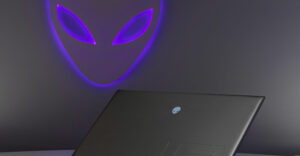
Forget Nintendo Wii’s motion-sensing controller. After less than six months on the market, Nintendo’s groundbreaking video game controller technology may be on the way out following the unveiling of a new game platform that controls gameplay using a player’s thoughts and emotions.
Emotiv Systems gave attendees a peek at its revolutionary brain computer interface and launched the Emotive Development Kit (EDK) at the Game Developers Conference in San Francisco Wednesday.
“The games industry is ripe for a revolution in the way players interact with a game,” said Nam Do, CEO and cofounder of Emotiv Systems. “Current interfaces, such as keyboards and controllers, are relatively basic and non-intuitive and are out of keeping with the sophistication levels of today’s games and the movement towards more immersive environments.”
Brain Signals
Dubbed “Project Epoc,” the first-of-its-kind technology can detect and process both a player’s conscious thoughts and unconscious emotions, according to Emotiv.
Those brain signals are interpreted using a specially-equipped helmet and a suite of software applications that give computers the ability to distinguish particular thoughts such as lifting an object or rotating it; detect and replicate a user’s expressions, including smiling or winking; and also respond to a player’s emotions, such as excitement or calmness.
Not only can the technology detect a user’s “non-conscious” emotions, but it can also decipher feelings “represented by brain activity patterns” unique to that particular player, according to Emotiv. This differs from previous thought-sensing interfaces that were only able to detect a limited number of “mental states” and can interpret dozens of expressions, gestures and emotions.
“The next major wave of technology innovation will change the way humans interact with computers,” Do said. “As the massive adoption of concepts such as social networking and virtual worlds has proven, we are incorporating computer-based activities not only in the way we work, learn and communicate but also into the way we relax, socialize and entertain ourselves.
“The next step is to enhance these experiences by making the way we interact with computers more lifelike. That’s where Emotiv’s highly disruptive technology comes in,” he added.
Under the Hood
The Emotiv Development Kit consists of the helmet to which multiple sensors have been affixed in order to detect brain activity as well as a set of application development suites.
Developers using “The Expressiv” suite can build facial expression recognition in real-time into a game, enabling the game’s characters to respond to a player smiling or frowning. “The Affectiv” suite measures a player’s underlying emotions, allowing a game to act in response to a player’s growing excitement, for instance. Incorporating “The Cognitiv” suite into a game will give players the ability to control their interactions in the game by thinking about an action.
During gameplay, the helmet’s sensors register the electric signals whizzing through a player’s brain and relays them to the system software. The software analyzes the signals and they are wirelessly transmitted to a receiver plugged into the USB (universal serial bus) port of the game console or PC. The device learns more and is better able to interpret a player’s thoughts each time it is used, according to Emotiv.
Game Revolution
The brain computer interface could indeed revolutionize the video game console and online game industry, David Hodgson, a gaming guru and author of gaming guides, told TechNewsWorld. However, there are “some significant hurdles the company would need to leap before the dream of controlling Mario with your brain can be realized,” he said.
“If these hurdles are addressed and masses of gamers can be swayed by the promise of seemingly telekinetic powers they have over their on-screen avatars, then yes, this could be revolutionary,” Hodgson added.
That said, it is imperative that the system must fulfill a function that current controllers do not, Hodgson noted. “Is it easier to hit the X button and pick up a power-up, or to think your way to the power-up? Just because it’s incredibly cool — and it is — doesn’t mean it’s practical in real gaming terms,” he explained.
Revolution Mechanics
However, before the technology can make it into gamers’ hands, Emotiv has to think seriously about how it will solve several problems, Hodgson stated. First, it will need a partner among the big three console makers — Sony, Microsoft and Nintendo. Emotiv’s technology needs to be inside every box a new console comes in, whether current or next generation. “If they don’t, many developers won’t spend the man hours implementing specific programming code for the device,” he noted.
Next, the equipment will need to go from being seen as a contraption, to a solution that is more elegant than anything even Nintendo offers with its Wii Remote. If Emotiv cannot accomplish that, the technology is destined to go the way of the power glove — an idea that didn’t catch on, Hodgson said.
In addition, the interface technology must offer gamers a better experience than any of the best controllers available today. “Just because it’s freakin’ cool — and likely to be freakin’ expensive, which is another concern — doesn’t mean it’ll catch on if it only does half of what a controller currently does,” he continued.
Finally, the company needs to determine if gamers will want to wear a diode-filled bicycle helmet when they play games and address safety concerns.
Nintendo’s Virtual Boy was a pioneer in true 3D gaming, according to Hodgson. It had just one problem: “You had to hunch over, peer into a set of giant binoculars and usually had a splitting headache after 20 minutes,” he stated.
Aiding Gamers
Nevertheless, the impact of wide adoption of the technology could be immense, Hodgson explained, adding that it would be a “godsend to fans of video games who can’t currently use their hands due to a disability.”
It could also impact professional video game players. Instead of having gaming championships where the fastest reaction time and trigger finger wins in a game of “Quake” or “Gears of War,” “you’d have competitions where the fastest brain wins,” he noted.
Consumers could see this in the next, next generation of video game consoles, such as the PS4 or Xbox 720 if large-scale developers opt to create code specifically for this contraption, and the device is championed by gaming industry heavyweights, and if Sony or Microsoft decides to, at the very least, add functionality for the item for most games, Hodgson predicted.




















































